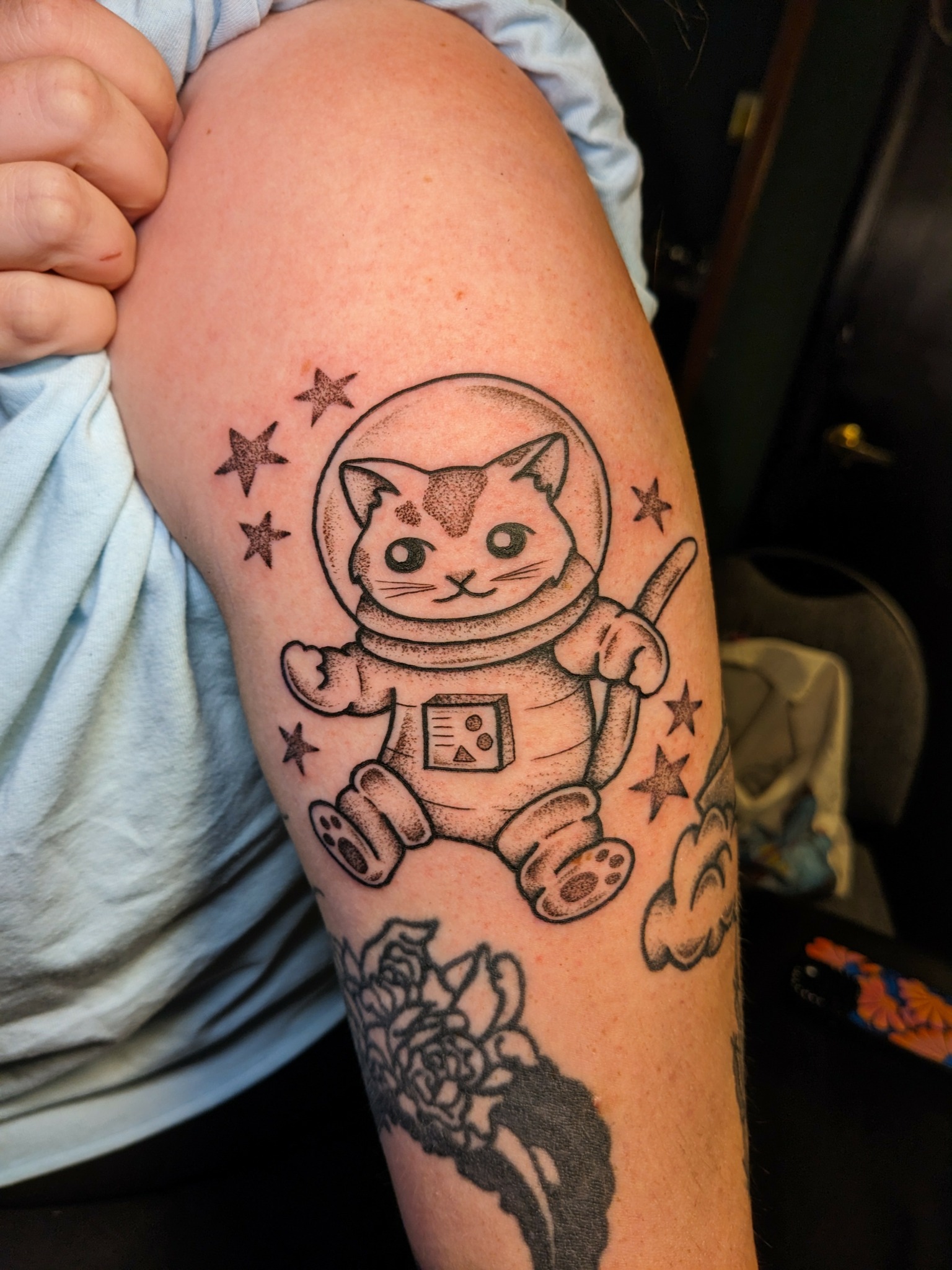We caught up with the brilliant and insightful Ann Geary a few weeks ago and have shared our conversation below.
Ann, appreciate you joining us today. Have you been able to earn a full-time living from your creative work? If so, can you walk us through your journey and how you made it happen? Was it like that from day one? If not, what were some of the major steps and milestones and do you think you could have sped up the process somehow knowing what you know now?
Making an actual living wage while tattooing certainly did not happen right away. When I first started as an apprentice, I was doing tattoos for $30-$40 each and usually about 30% goes to the shop and 15% goes to taxes. It wasn’t until I really started to promote myself, learn the ins and outs of advertising, and spending every free moment outside of actual tattooing doing more drawing that I realized the first several years of this job requires serious dedication. Tattooing often feels like it’s more of a lifestyle than a job in that way; I make my own hours and can work as much or as little as I want, and yet I rarely have a day off. Honestly I feel that I did just get a bit lucky in the beginning of my career that I was able to make tattooing my full time job less than a year in, but that’s not a standard and it shouldn’t be. Tattooing as a discipline requires practice, patience, and incredible amounts of dedication.

Ann, love having you share your insights with us. Before we ask you more questions, maybe you can take a moment to introduce yourself to our readers who might have missed our earlier conversations?
I grew up in a rural corner of southwest Pennsylvania and I am so thankful I got to grow up in a very creative family. Art and music was always encouraged and supported in the household as well as strict academic discipline. As a kid I did a lot of symphony work as a string bassist, doing musical theater, choral performances, and solo recitals. I didn’t start really taking art seriously until I was in college and needed a way to stay creative while getting my History degree from the University of Pittsburgh.
I really fell in love with oil painting and doing children’s illustration, and the opportunity to do a tattoo apprenticeship came up around Christmas my senior year of undergrad and I thought it was a better path for me than law school, so I figured I should give it a shot!
At first I definitely was drawn to tattooing because it meant being a self-employed badass, but as I began to work with different clients who wanted very healing and very personal pieces, I realized that tattooing was what I wanted to forever.
As someone who struggles with various chronic illnesses and chronic pain, I understand what it’s like to feel trapped in a body that feels like it’s failing. Moreso, as a woman, sometimes it can often feel like we have very little control over what happens to our bodies. Tattoos are a way we can have aspects of our bodies that we love, tattoos can cover scars, make areas we don’t like feel beautiful, and process major life changes. I feel that it’s common for tattoo artists to start to become detached from the importance of our work because we tattoo every day, but for the few hours our clients are with us, we are a very important person in their lives. I believe in helping to create a tattoo environment that encourages my clients to feel comfortable, cared for, understood, and welcomed when they need it most.
I love my clients dearly, it’s an honor and a privilege to be able to help them love their bodies, it’s truly my dream job. There’s nothing better than doing a tattoo for someone and seeing their smile after, knowing they have something they can carry with them for the rest of their lives. It’s the best job in the world, I’m so grateful for everything tattooing has given me.
Are there any resources you wish you knew about earlier in your creative journey?
Absolutely, the first that comes to mind is befriending other people in your industry. The tattooer I learned how to tattoo from was always putting down other artists and I figured that’s just how the industry was. It felt wrong, so I made sure when I moved cities to work made as many friends as I could in my industry. I reached out to other apprentices and junior artists and told them that I’d love to meet them or get tattooed by them. Building relationships with other artists, especially as someone who’s self employed, is crucial to building industry-wide solidarity.

What can society do to ensure an environment that’s helpful to artists and creatives?
Moving forward we need to understand that service workers are deserving of kindness, respect, and being paid what they deserve: a living wage. With the rise of AI art, many businesses and people are turning to AI to produce art because it means they don’t have to pay an artist. Fortunately for artists, the majority of AI art is souless, hollow, poorly composed, and reflects laziness on the end of the user. Artists can work to help create exactly what you want, and maybe AI will do that eventually but it will always be a regurgitation of everything that’s already been done. If you want something unique that can evolve with your brand or your needs, work with an artist. People who work deserve to be paid for their work.
Contact Info:
- Website: curiosityshoptattoo.com
- Instagram: @littlehoneytattoos





Image Credits
Katie @nokaphoto on Instagram


